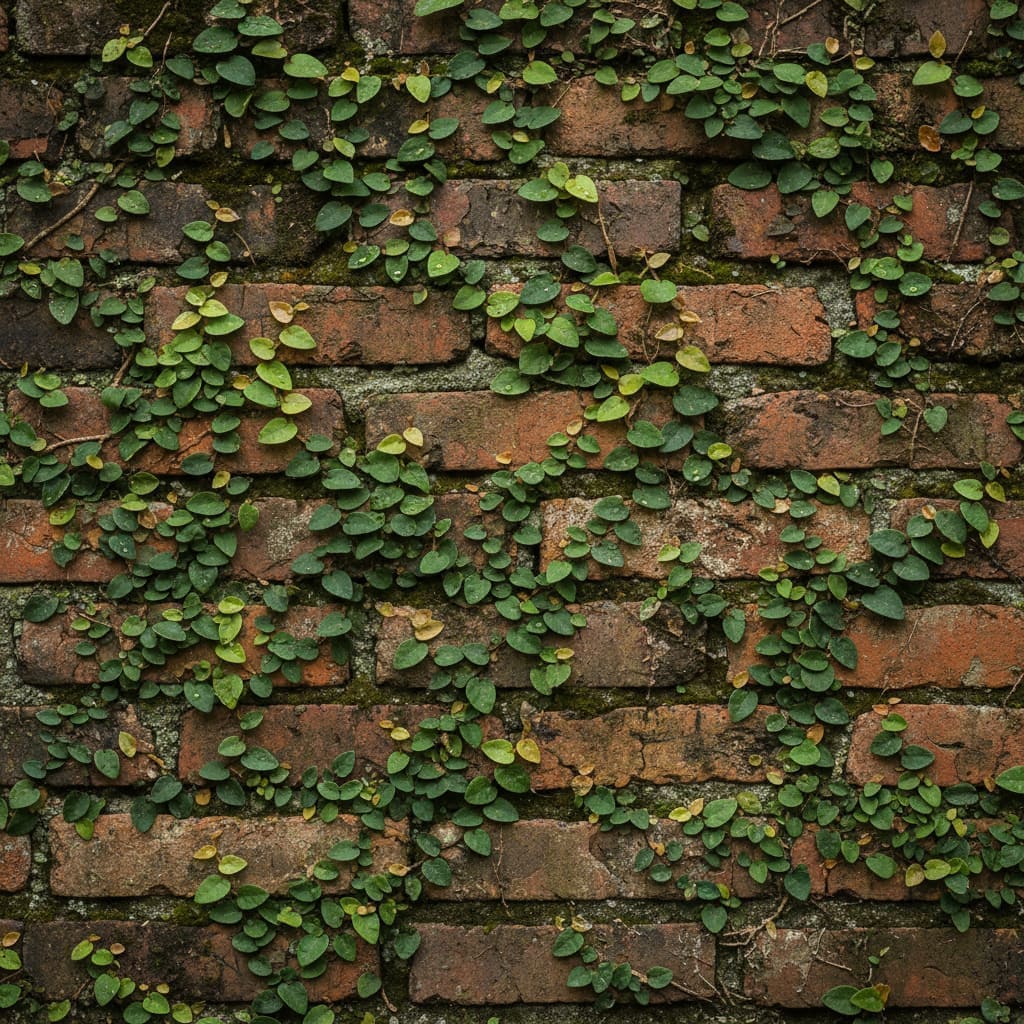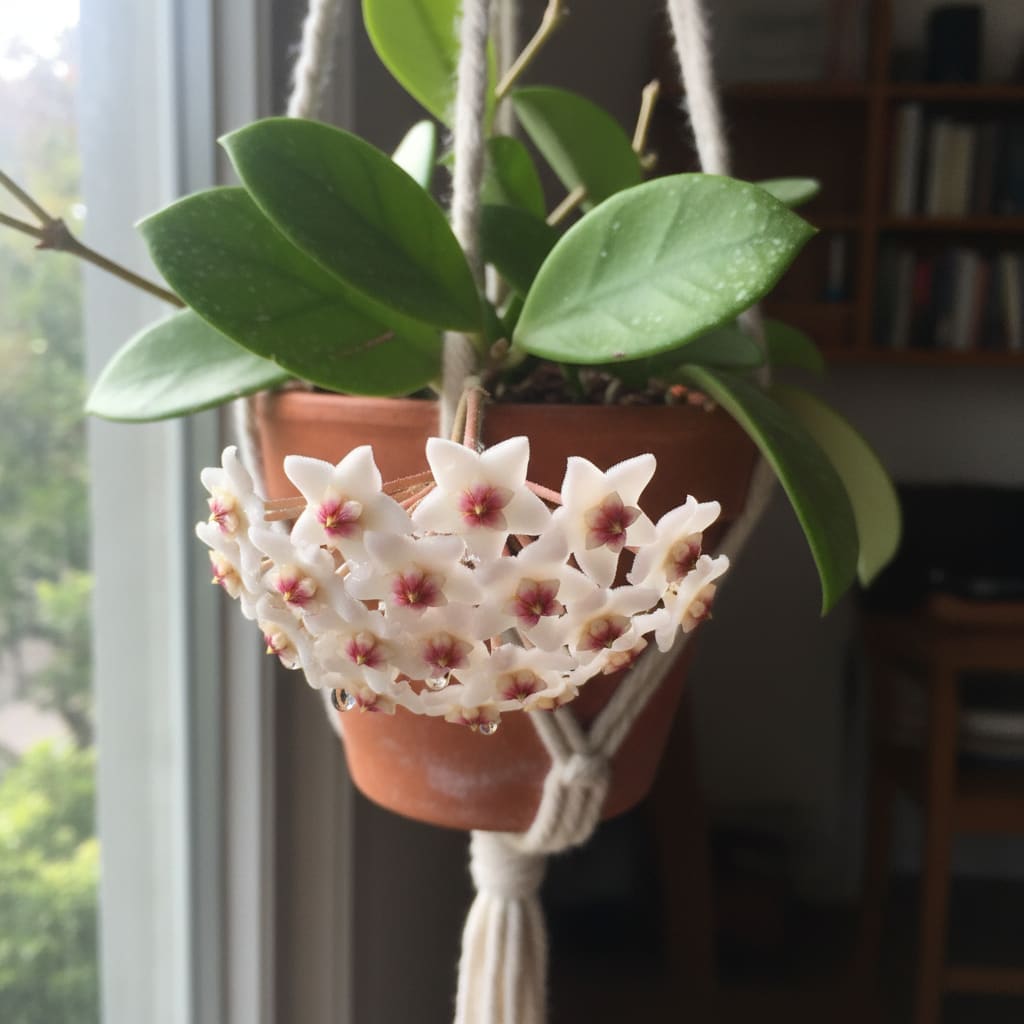Ficus pumila (Creeping Fig) Care & Growing Guide
Overview
Ficus pumila, commonly known as the Creeping Fig, is a fast-growing, evergreen vine native to East Asia. Valued for its ability to cling to walls, trellises, and other surfaces, it is a popular choice for both indoor and outdoor ornamental use. In its juvenile stage, the plant produces small, delicate leaves, while mature growth features larger, thicker foliage. This transformation makes it a versatile plant for decorative and functional purposes.
In its native habitat, the Creeping Fig thrives in warm, humid environments. Indoors, it is appreciated for its trailing or climbing habit, making it suitable for hanging baskets, moss poles, or as a living wall covering.
Identification & Growth Habit
The Creeping Fig is a member of the Moraceae family. It has slender, wiry stems that produce aerial roots, enabling it to cling to surfaces. Juvenile leaves are typically 0.5–1 inch long, heart-shaped, and thin in texture. As the plant matures, leaves can grow to 2–4 inches, becoming thicker and leathery.
Growth can be vigorous under optimal conditions. Indoors, it can trail elegantly from shelves or climb supports. Outdoors in suitable climates, it can spread extensively over masonry or fences.
Light & Placement
- Indoors: Provide 6–8 hours of bright, indirect light daily. Position near an east- or north-facing window, or filter light from a south/west window with sheer curtains.
- Outdoors: Can adapt to full sun if gradually acclimated, but partial shade is ideal in hot climates to prevent leaf scorch.
Avoid prolonged exposure to harsh midday sun indoors, as this can cause leaf burn. Insufficient light may lead to sparse growth and reduced vigor.
Watering & Humidity
Keep the soil consistently moist but not soggy. Allow the top inch of soil to dry before watering again. Overwatering can lead to root rot, while underwatering may cause leaf drop.
During fall and winter, when growth slows, reduce watering frequency. Maintain humidity between 50–70% for best results. Use a humidifier, pebble tray, or place the plant in humid rooms such as kitchens or bathrooms.
Soil & Repotting
Use a well-draining potting mix with a neutral to slightly acidic pH. A blend containing peat moss, perlite, and pine bark works well. Ensure the container has drainage holes to prevent waterlogging.
Repot every 1–2 years or when roots become crowded. Spring is the best time to repot, allowing the plant to recover during the active growing season.
Fertilizing
Feed monthly during spring, summer, and fall with a balanced, diluted liquid fertilizer. In winter, reduce feeding to every other month, as the plant’s nutrient needs decrease during slower growth.
Pruning & Training
Regular pruning helps maintain the desired size and shape. Trim back overgrown stems to encourage bushier growth and prevent legginess.
- For climbing: Train stems onto a trellis, moss pole, or other support. Secure gently with soft ties.
- For trailing: Allow stems to cascade from hanging baskets or shelves, trimming as needed to manage length.
Remove any dead or damaged foliage promptly to maintain plant health.
Propagation
Step-by-Step Stem Cutting Method
- Choose a healthy stem and cut a 4–6 inch section with at least two nodes.
- Remove the leaves from the lower node(s).
- Place the cutting in water or directly into moist, well-draining soil.
- If rooting in water, change the water every few days to keep it fresh.
- Keep the cutting in bright, indirect light and maintain high humidity.
- Roots should develop within a few weeks; transplant to a pot when well-established.
Common Problems
Pests
- Spider mites: Look for fine webbing and stippled leaves. Increase humidity and treat with insecticidal soap or horticultural oil.
- Scale insects: Appear as small, brown bumps on stems and leaves. Remove manually or treat with horticultural oil.
- Mealybugs: White, cottony masses on foliage. Wipe off with alcohol-dipped cotton swabs and monitor closely.
Diseases
- Root rot: Caused by overwatering or poor drainage. Remove affected roots, repot in fresh soil, and adjust watering practices.
- Leaf spot: Brown or black spots may indicate fungal issues; improve air circulation and avoid overhead watering.
Toxicity & Pet Safety
Ficus pumila is considered toxic to cats, dogs, and humans if ingested, due to irritating sap. Keep out of reach of pets and children, and wear gloves when pruning if you have sensitive skin.
Styling & Decor Tips
- Use as a living wall covering indoors for a lush, green backdrop.
- Hang in baskets to showcase trailing stems.
- Train along indoor trellises for vertical interest.
- Pair with contrasting foliage plants for texture variety.
Varieties & Cultivars
- Ficus pumila ‘Variegata’: Features green leaves edged in creamy white.
- Ficus pumila ‘Quercifolia’: Small, lobed leaves resembling oak leaves.
Buying Tips & Maturity
When purchasing, look for plants with vibrant, unblemished leaves and no signs of pests. Juvenile plants will have smaller, softer leaves; mature specimens may display larger, leathery foliage. Consider the plant’s growth habit and available space before buying, as it can spread quickly under good conditions.
Seasonal Care
- Spring/Summer: Active growth period; maintain regular watering, feeding, and pruning.
- Fall: Gradually reduce watering and feeding as growth slows.
- Winter: Provide bright light, reduce watering, and maintain humidity to prevent leaf drop.
FAQ
- How fast does Creeping Fig grow? In optimal conditions, it can grow several feet per year, especially outdoors.
- Can I grow Creeping Fig outdoors year-round? Only in frost-free climates; otherwise, bring indoors before temperatures drop below 55°F.
- Why are my Creeping Fig leaves turning yellow? Common causes include overwatering, poor drainage, or sudden changes in light.
- Will it damage walls? Outdoors, aerial roots can cling tightly to surfaces and may cause damage to certain materials over time.
- Does Creeping Fig flower indoors? Flowering is rare indoors; it is primarily grown for its foliage.
Sources: Wikipedia, The Spruce
Troubleshooting Scenarios
- Leggy growth despite good light: May indicate the plant needs more frequent pruning to stimulate lateral shoots; pinch tips regularly.
- Leaves curling inward: Often a sign of low humidity or inconsistent watering; increase ambient moisture and check soil moisture levels.
- Slow growth in warm months: Could be due to depleted nutrients; review feeding schedule and ensure roots are not pot-bound.
Advanced Pruning & Training Techniques
For intricate topiary shapes, allow the Creeping Fig to establish on a wire frame, trimming regularly to maintain definition. Espalier training against a flat surface can create structured patterns; guide new shoots horizontally or vertically with gentle ties, removing any that deviate from the design. To rejuvenate an overgrown plant, perform a hard prune in early spring, cutting back to just above a healthy node to encourage fresh, dense foliage.
Companion Plant Suggestions
- Maidenhair fern (Adiantum spp.): Complements with delicate fronds and similar humidity needs.
- Peace lily (Spathiphyllum spp.): Offers contrasting leaf shape and thrives in similar light conditions.
- Pothos (Epipremnum aureum): Pairs well in mixed hanging baskets for varied texture and color.
Do & Don't List
- Do: Rotate the plant periodically for even growth.
- Do: Inspect regularly for pests, especially on the undersides of leaves.
- Don't: Place directly above heating vents, which can dry out foliage.
- Don't: Use heavy, compacted soil that retains excessive moisture.






